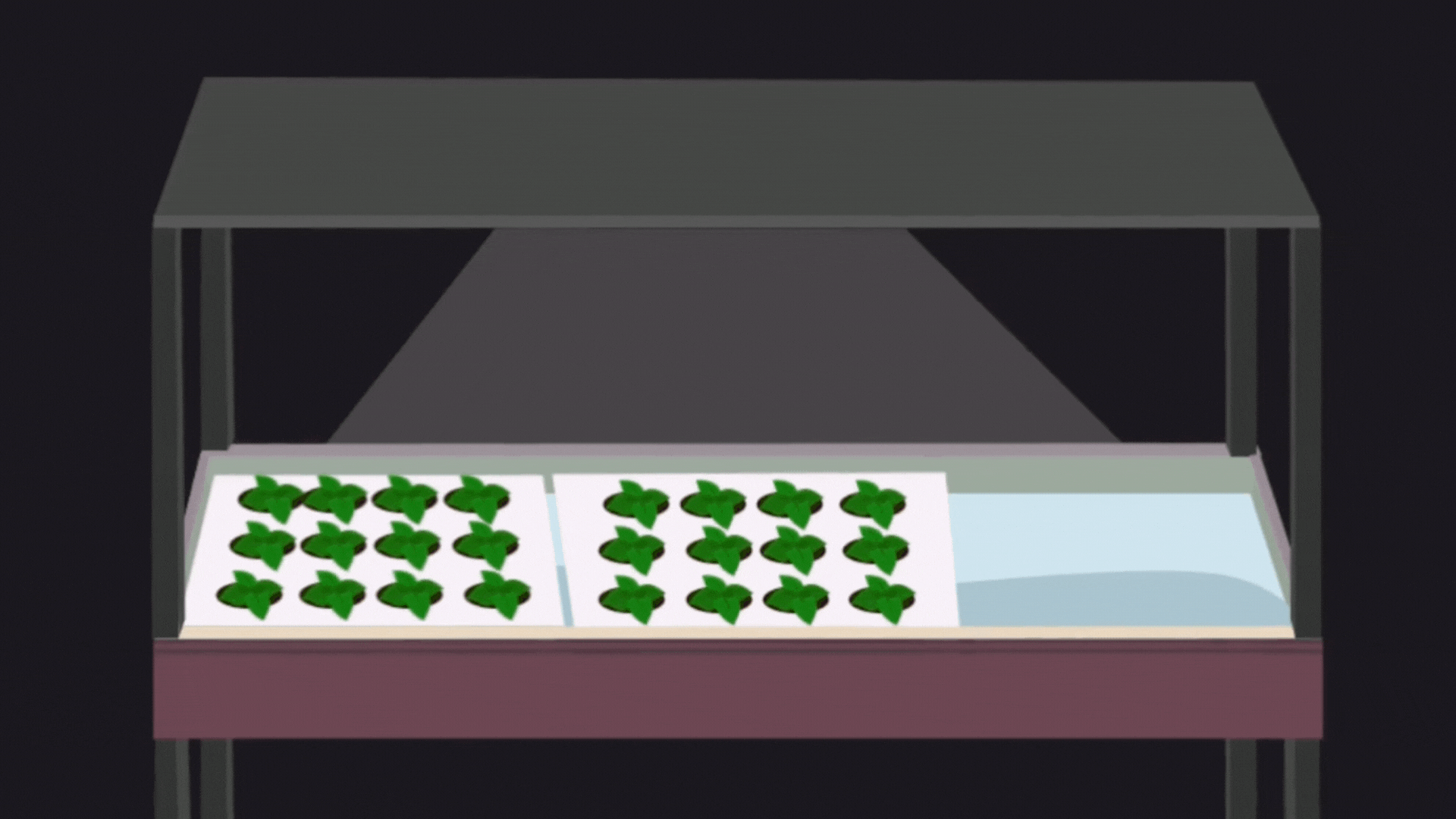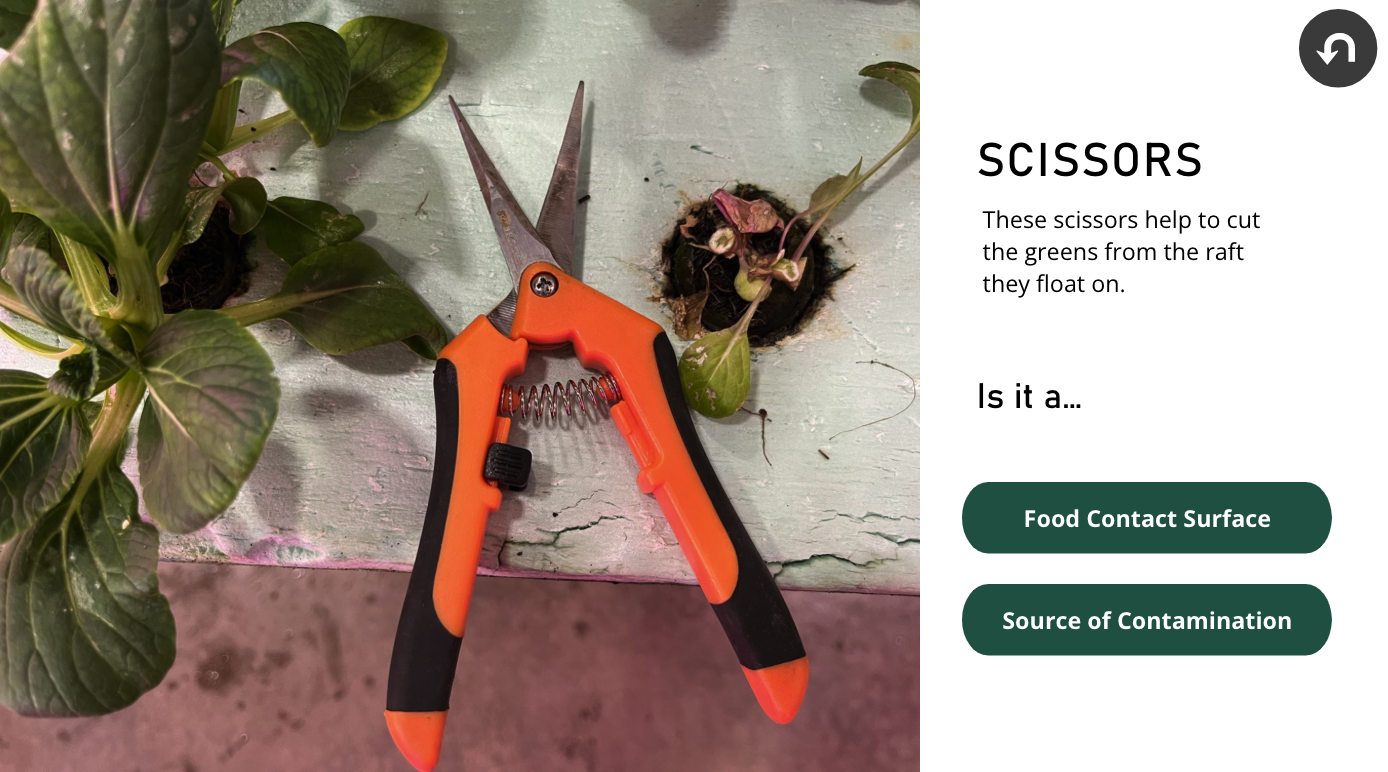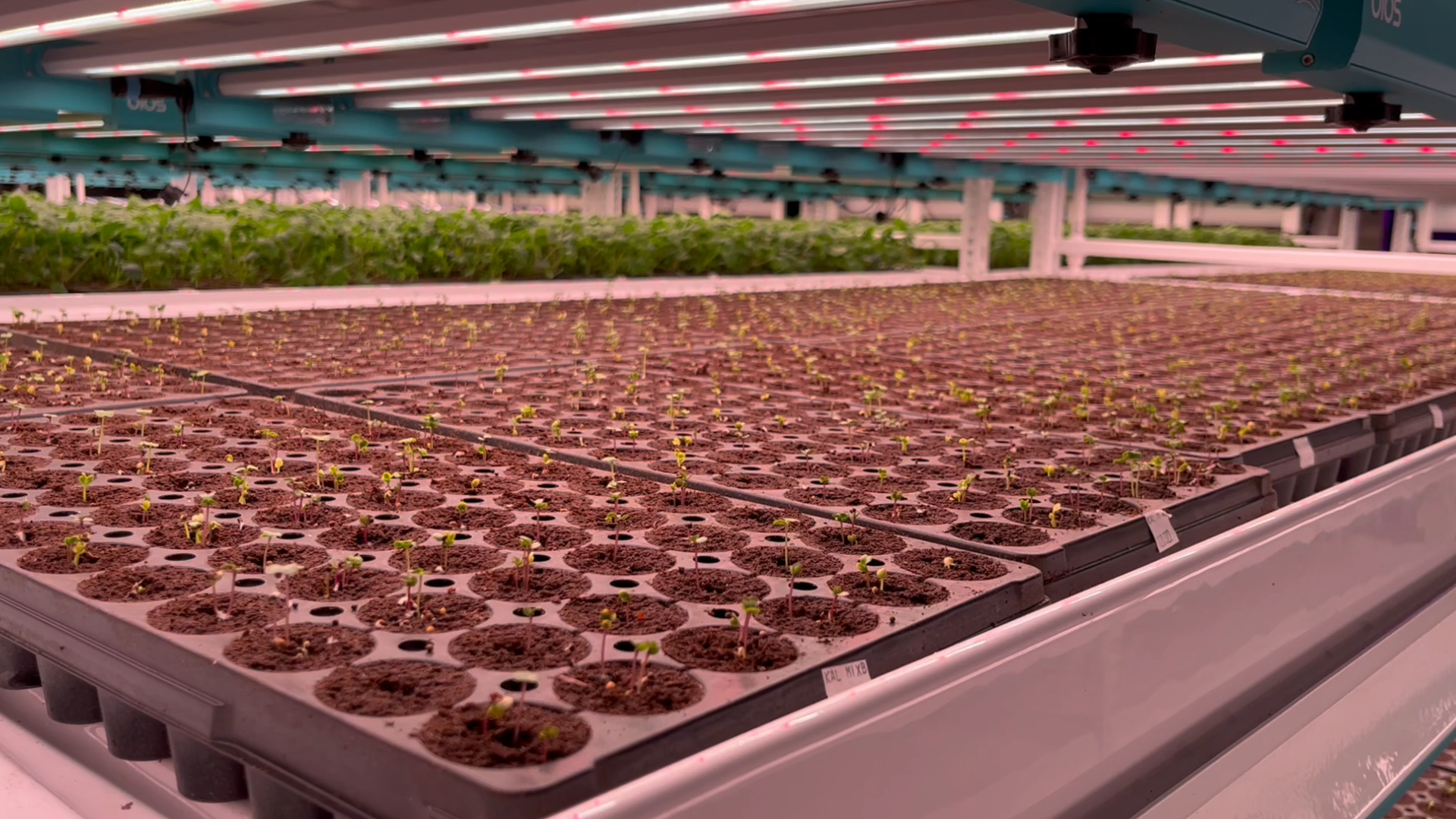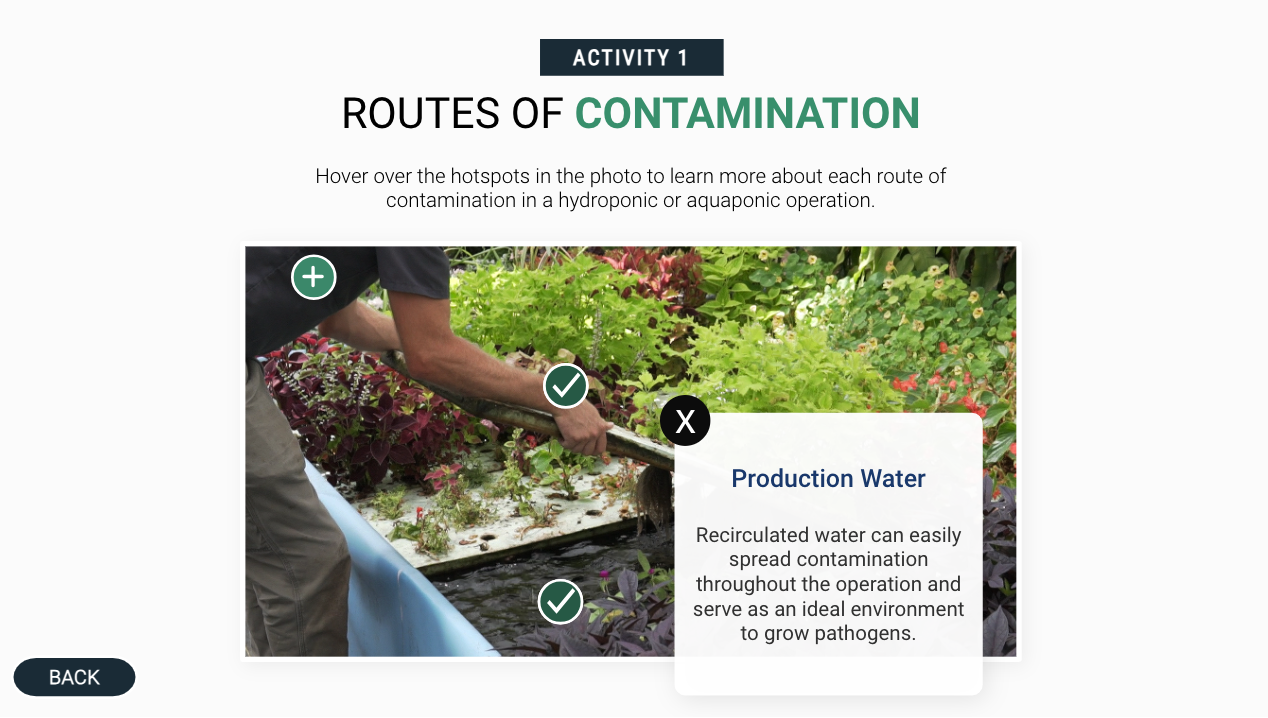
This project involved designing a series of five interactive e-learning modules to educate hydroponic growers on how to reduce food safety risks. Each module included an introduction video, an animated or clickable activity, and a conclusion video. The goal was to create a user-friendly learning experience that would be engaging, accessible, and informative.
As the UX and multimedia designer, I collaborated with subject matter experts from Michigan State University Extension to identify the learning objectives and understand the needs of the target audience. From there, I led the visual and interactive design process, including filming and editing video content, designing graphics and animations, and building the final modules in Articulate Storyline 360.


I first conducted background research on hydroponic systems and common food safety risks specific to hydroponic and aquaponic operations. The five interactive modules were adapted from educational guidebooks developed by the Northeast Center to Advance Food Safety (NECAFS), which provided the foundation for both the content and structure.
To better understand the context and user needs, I conducted informal interviews with hydroponics workers and a food safety coordinator while filming at several operations. These conversations helped me better understand the users, key tasks, and the type of environment in which the modules would be used. I also collaborated closely with food safety educators to ensure the content was accurate and aligned with industry best practices.

The design focused on clarity, consistency, and accessibility. I used bright colors and bold visuals to match the environment of hydroponics operations and keep the modules engaging.
Key UX considerations included:


This project was exciting to create, and I learned a lot during the initial design phase. While it has been tested with a few educators, it has not yet been tested with the target audience. In the future, I hope to conduct usability testing with hydroponics growers to identify pain points and refine the modules based on their feedback.